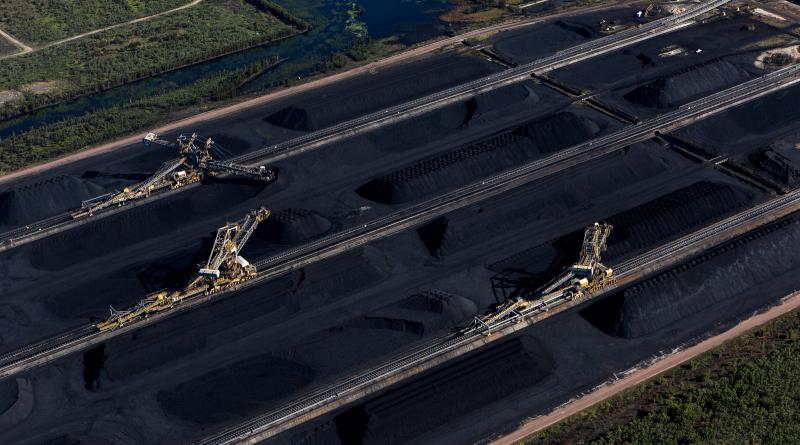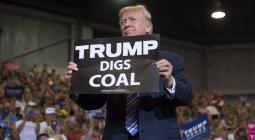The World’s Most Insane Energy Project Moves Ahead.

Thanks to President Trump and his transparent and perverse desire to enrich his golfing buddies in the fossil fuel industry and to accelerate the climate crisis, the U.S. is the most notorious climate criminal in the world right now. But the Aussies are giving us a run for our money.
Exhibit A: the decision this week by the Queensland State government to allow a big coal mine in northeastern Australia to move forward. The project, known as the Carmichael mine, is controlled by the Adani Group, an Indian corporate behemoth headed by billionaire Gautam Adani. If it ever opens, the Carmichael mine would not be the biggest coal mine in the world, or even the biggest coal mine in Australia. But it may be the most insane energy project on the planet, and one that shows just how far supposedly civilized nations (and people) are from grasping what’s at stake in the climate crisis.
The site for the Carmichael mine is in the Galilee Basin, an unspoiled region of Queensland that Adani has been itching to get his hands on for at least a decade. The battle over the mine has been the usual sordid tale of fossil fuel industry development, in which a rich, powerful, politically connected corporation gets its way with weak and corrupt politicians. (Australian writer James Bradley has a great backgrounder on the mine here.)
But of course there are a lot of stupid and destructive energy projects in the world right now. What makes Adani worse than the others?
Let’s start with the Great Barrier Reef. The Australian Marine Conservation Society called the approval of the mine “bad news” for the reef. That’s an almost criminal understatement.
The approval of the Adani project is an aggressive attack on the 1,600-mile-long reef in two deadly ways. First, by condoning the mining and burning of coal, which is heating up and acidifiying the oceans and killing coral reefs, Australian politicians are essentially saying they are willing to sacrifice one of the great wonders of the world for a few jobs for their pals and some extra cash in their pockets. In fact, a key part of the Adani project is a new coal terminal on the Queensland coast, which is right at the edge of the Barrier Reef. That means more industrialization in the area, more water pollution, more coal barges floating over the reef, more risk of disasters that would dump dirty black rocks on one of nature’s crown jewels.
I spent a few days diving on the Barrier Reef last year, and I can tell you, there are few sights more surreal to anyone who cares about the fate of the planet than watching a ship loaded with coal heading out over the Great Barrier Reef. Healthy coral reefs are the rainforests of the ocean, teeming with life and vital to the underwater ecosystem. I saw stretches of brightly colored coral crowded with sharks, starfish, urchins and even a Manta-ray. But I also saw vast expanses of bleached coral that looked like underwater deserts. A 2018 Nature study described the reef on the verge of collapse. “We thought the Barrier Reef was too big to fail,” one researcher said, “but it’s not.”
The mine is insane on another level, too. The coal will be exported to India, a nation that is hugely vulnerable to the impacts of climate change and is struggling to make the transition to clean energy. Last week, at the same moment that Queensland politicians were approving the Adani project, northern India was sweltering under a 120-degree F heat wave so brutal that people were advised not to venture outdoors after 11 a.m. and a 33-year-old man was beaten to death in a dispute over water.
Cognitive dissonance, anyone?
By itself, the Adani project is not huge. It’s expected to produce about ten million tons of coal a year at first (that’s about the size of a big mine in the Wyoming’s Powder River Basin). But the project includes a 200-mile long railroad to the coal terminal on the Queensland coast, which could potentially open the remote Galilee Basin to further development.
The biggest myth associated with the Adani mine may be that continuing to mine and export coal is somehow vital to the Australian economy. It is not. As James Bradley points out, although coal accounts for almost 15 per cent of Australia’s exports, it contributes less than 1 percent of the Commonwealth government’s total revenue. And it’s not like the industry creates a lot of jobs, either. In 2018, it employed slightly fewer than 50,000 people. That’s less than 0.4 per cent of Australia’s total workforce, and, more importantly, it’s less that the 65,000 jobs created by tourism at the Great Barrier Reef.
Nor does the coal industry funnel much money back into the local economy. A 2017 study found 86 percent of the Australian mining industry is foreign owned, so any profits flow offshore and help billionaires like Adani pay for more lobbyists who perpetuate the myth that coal has a future.
What the coal industry does have is money to pay off corrupt politicians. In the past 10 years or so, the Australian mining industry poured well over half a billion dollars into lobby groups that push coal and fossil fuels. That has been a good investment: Between 2008 and 2013 in Queensland alone, the government laid out more than $8 billion on projects to benefit the coal industry.
As David Ritter, the head of Greenpeace Australia Pacific, tweeted, the approval of permits for the mine is “a disgrace” and evidence that the “whole system is rigged and broken.”
The Carmichael mine is still a long way from a done deal. There are still more regulatory hoops to jump through, and the abysmal economics of coal may yet kill the project.
But the fact that the project even got this far is a sign of the greed and stupidity that makes the climate crisis so hard to tackle.The Monthly calls the approval of the mine “an act of climate vandalism that represents everything that has gone wrong with politics in Australia.” It’s a good line, but I’d go further than that — it’s an act of climate vandalism that represents everything that has gone wrong with politics in the civilized world.
14 June 2019
Rolling Stone


